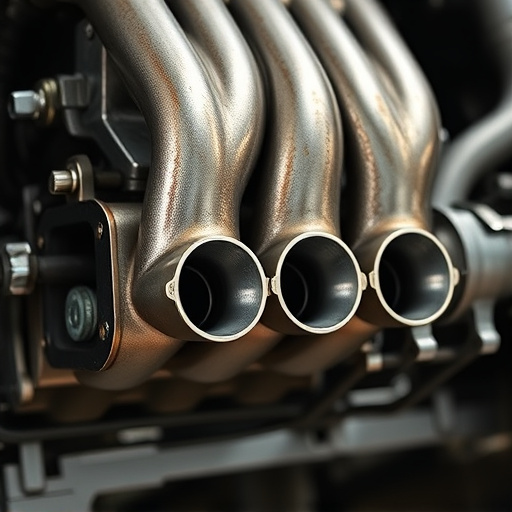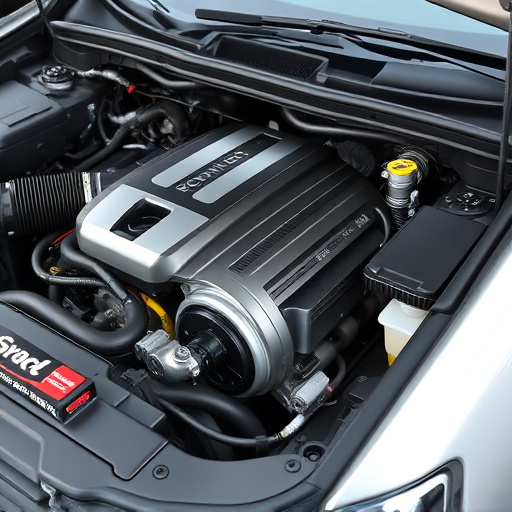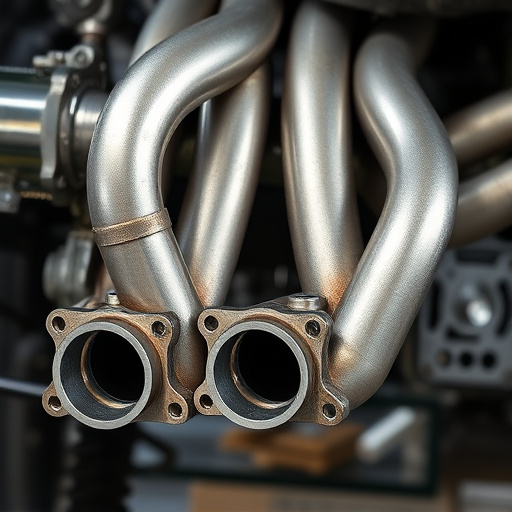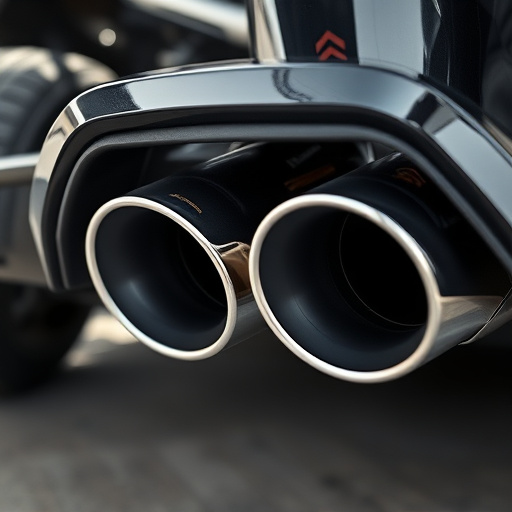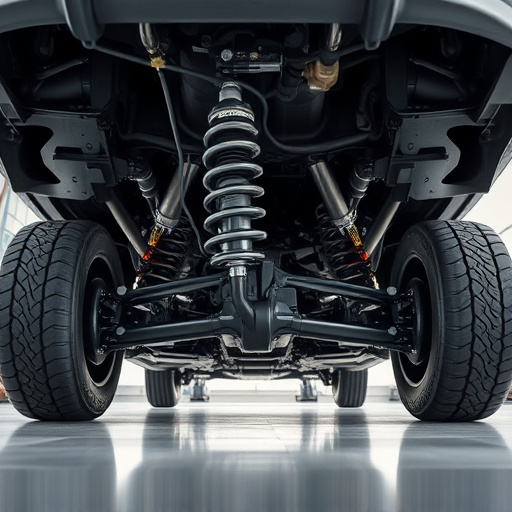Turbocharged engines face risks of overboosting, damaging critical components like the turbocharger and exhaust system. This occurs due to excessive spool time or mechanical failures in the boost control system, leading to detonation (knocking) and reduced performance. A turbo wastegate acts as a safeguard by regulating boost pressure, preventing overboosting, minimizing detonation risk, and extending engine lifespan. Understanding overboost and the vital role of a turbo wastegate is crucial for owners and mechanics of high-performance turbocharged vehicles. This component optimizes combustion, enhances efficiency, maintains engine longevity, and contributes to improved vehicle dynamics when integrated with suspension kits and performance exhaust systems.
“Unleash your vehicle’s full potential while ensuring optimal performance and safety with the powerful ally, the turbo wastegate. This innovative component plays a pivotal role in modern turbocharged engines, addressing the delicate balance between boost pressure and combustion stability.
In this article, we’ll explore the intricacies of overboosting, its inherent risks, and how the turbo wastegate acts as a guardian, preventing detonation. We’ll also delve into its effectiveness, benefits, and considerations, offering a comprehensive guide for car enthusiasts.”
- Understanding Overboost and Its Dangers in Turbocharged Engines
- The Role of the Turbo Wastegate in Preventing Detonation
- How Effective is a Turbo Wastegate? Benefits and Considerations
Understanding Overboost and Its Dangers in Turbocharged Engines
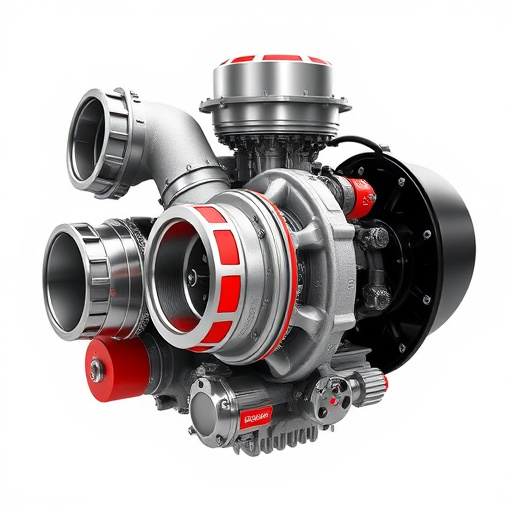
In turbocharged engines, overboost occurs when the boost pressure exceeds the engine’s designed limits, leading to several potential dangers. This can happen due to various factors such as excessive turbocharger spool time, incorrect timing, or even mechanical failures in the boost control system. When overboost happens, it can cause severe damage to critical components like the turbocharger itself, the exhaust system (including muffler tips), and even the engine block and cylinder heads. The increased pressure can lead to detonation, also known as knocking, which not only reduces engine performance but can also result in costly repairs or even total engine failure if left unchecked.
Understanding overboost is crucial for anyone owning or working on high-performance vehicles equipped with turbochargers. A turbo wastegate plays a vital role in preventing this condition by regulating boost pressure. By allowing excess exhaust gases to bypass the turbocharger, it ensures that the turbine does not spin faster than intended, thus maintaining optimal boost levels within safe parameters. This prevents detonation and extends the lifespan of both the engine and its high-performance parts, such as brake rotors designed for better cooling in demanding conditions.
The Role of the Turbo Wastegate in Preventing Detonation
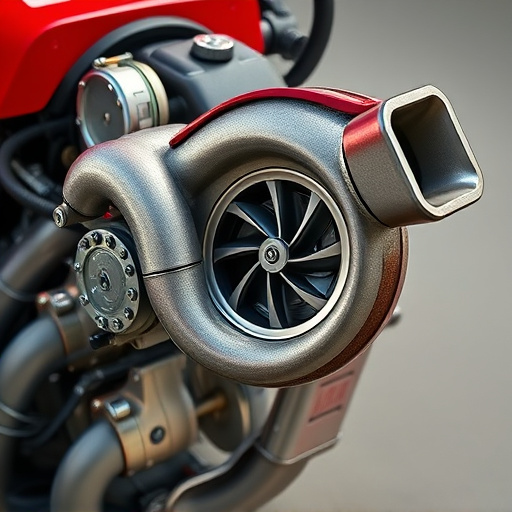
The turbo wastegate plays a pivotal role in preventing detonation from overboosting in turbocharged engines. Its primary function is to regulate the flow of exhaust gases, ensuring that the engine maintains optimal combustion and avoids premature ignition. By controlling the timing and pressure of exhaust venting, the wastegate prevents excess boost levels, which can lead to damaging detonation (or knocking). This precise control is crucial for maximizing engine performance while preserving its longevity.
Moreover, a well-functioning turbo wastegate enhances overall engine efficiency by managing intake components, such as the turbocharger, and optimizing exhaust systems. It also contributes to cleaner combustion, as it helps maintain proper air-fuel ratios through effective management of the air filter kits and their associated components. This synergy between the wastegate and other intake and exhaust elements is what makes it an indispensable component in modern turbocharged vehicles.
How Effective is a Turbo Wastegate? Benefits and Considerations
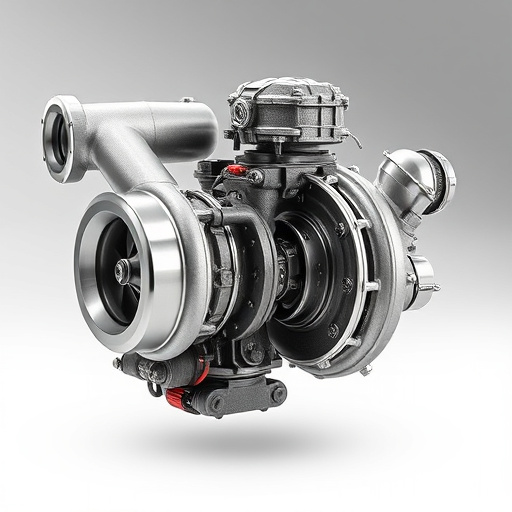
A turbo wastegate is an effective solution for preventing detonation caused by overboosting in turbocharged vehicles. Its primary function is to regulate engine boost pressure by selectively reducing or eliminating exhaust gas flow through the turbine when the driver releases the throttle or during low-load conditions. This mechanism prevents excessive force on the turbine, which can lead to unwanted detonation and potential damage to the turbocharger.
The benefits of a turbo wastegate are numerous. It enhances engine stability and performance by maintaining optimal boost levels under various driving conditions. This is particularly useful for enthusiasts who frequently push their vehicles to the limits, as it ensures consistent power delivery without compromising engine longevity. Moreover, integrating a turbo wastegate with suspension kits and performance exhaust systems can further optimize vehicle dynamics and exhaust tone, catering to both everyday drivability and track-day enjoyment.
The turbo wastegate plays a pivotal role in safeguarding turbocharged engines from overboost-induced detonation. By efficiently controlling exhaust flow, it ensures optimal combustion, enhancing engine performance and longevity. This crucial component is an essential addition to any turbocharging system, offering both safety and efficiency benefits. Understanding its functionality and the dangers of overboost can help car enthusiasts make informed decisions when optimizing their vehicles’ power outputs.





